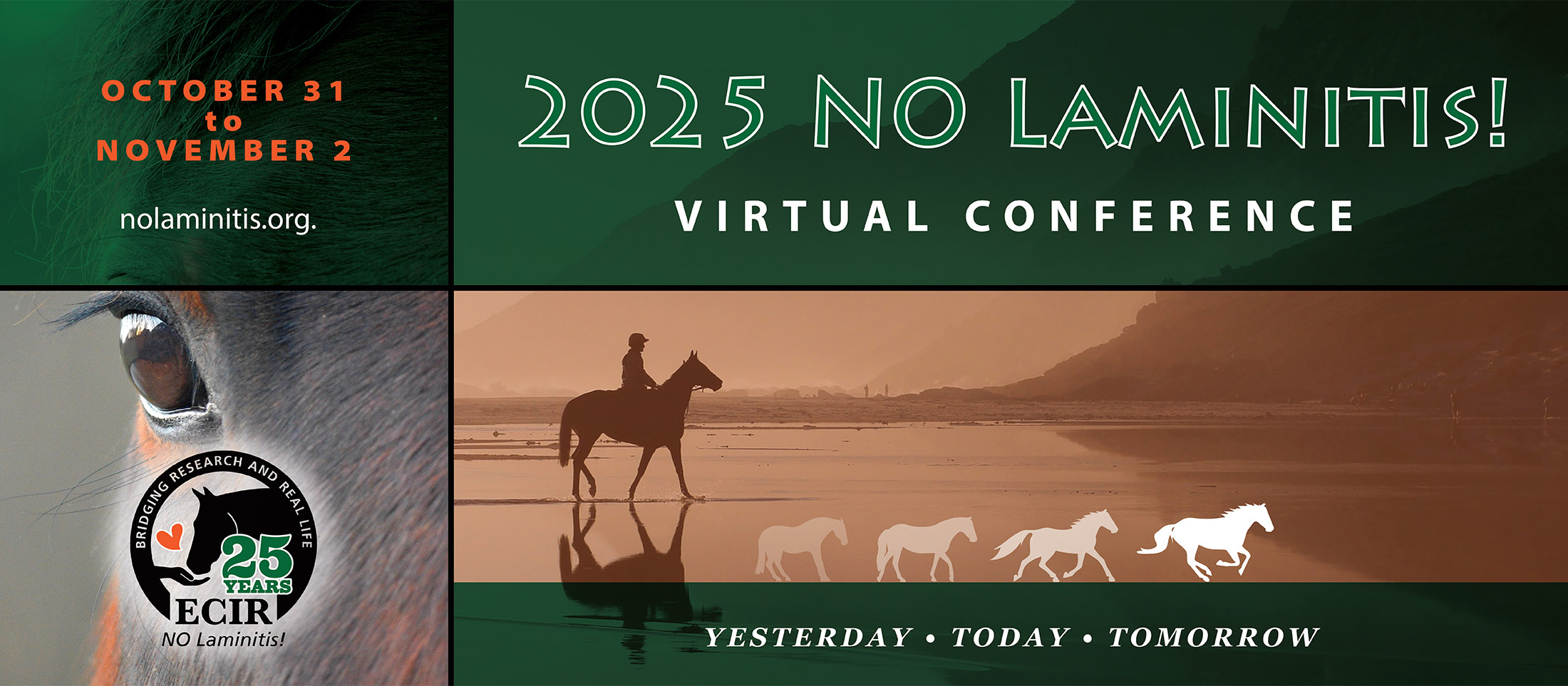Conference Topics
- Early signs of PPID
- Pergolide dosage and other poll results from ECIR Group
- Obesity, hyperinsulinemia, and the curse of laminitis
- Risk of equine metabolic syndrome in Arabian horses and their subgroups
- Is PPID Parkinson's Disease of Equids?
- Factors affecting ACTH concentration and implications for endocrine diagnostic testing
- Mechanisms leading to hypertriglyceridemia in SGLT2 treated horses [ECIR Funded Research]
- Nutrition Considerations for Equine Hyperinsulinemia
- Factors influencing concentrations and types of water- and ethanol-soluble carbohydrates in cool-season grasses
- Effects of vitamin/mineral supplementation with or without jiaogulan on hoof growth, metabolic health, and nutrient status in mature horses
- GLP-1— Friend or Foe?
- Hypertriglyceridemia with SGLT2 — biochemistry and management
- Veterinary Experiences with SGLT2 Inhibitors
- Mitigating Iron Overload Disorder in the Black Rhino: Comparative Solutions to a Cross-Species
- Every Horse is Different: How Owners Navigate and Manage Equine Metabolic Disease and PPID
- How does foot anatomy change to become "normal?"
- Loading of the foot can and will alter the shape and structures of the digital bones
- Hoof wall growth and how does the hoof adapt to "normal" loading?
- Anatomy of the palmar foot and the presence of a flexible skeleton in healthy feet
- Long toes seem to dominate the feet of the domestic horse. How does this happen?
- Is the blood supply to the frog and digital cushion, as the anatomy books state, scant?
View Full Conference Schedule
Click here for more information about Continuing Education Credit.













